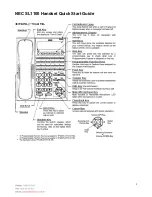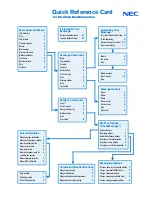
Administration
A31003-C1000-M101-1-76A9, 03/2016
182
OpenScape Desk Phone CP200/400/600, Administrator Documentation
administration.fm
Multiline Appearance/Keyset
A DSS key is a special variant of a line key. It enables a direct connection to a target phone,
allowing the user to pick up or forward a call alerting the DSS target and make/complete a call
to the DSS target.
3.11.6.1
General DSS Settings
These parameters define the behaviour of all DSS keys.
If the user picks up an incoming call for the DSS target by pressing the associated DSS key,
the call is forwarded to the user’s primary line. Thereafter, the user’s phone rings and the user
can accept the call.
The value of
Call pickup detect timer (seconds)
determines the time interval in which the de-
flected call is expected at the primary line. When the call arrives whithin this interval, it is given
special priority and handling. If a second call arrives on the primary line during this interval, it
will be rejected. If a second call arrives outside the interval, it will be treated just like any other
incoming call. The default is 3.
If
Deflecting call enabled
is checked, the user can forward an alerting call to the DSS target
by pressing the DSS key. The default is "No".
If
Allow pickup to be refused
is checked, the user is enabled to reject a call alerting on the
line associated with the DSS key. The default is "No".
The DSS key can be configured to indicate the call forwarding state of the number represented
by the DSS key. This feature is activated when
Forwarding shown
is enabled.
>
Generally, it is advisable to restrict the user’s possibilities to modify line keys, includ-
ing DSS keys. This can be achieved solely by the DLS. For further instructions, see
the DLS Administration Guide.
>
To enable the immediate answering of a call via the DSS key,
Allow auto-answer
in the user menu must be activated. The complete path on the WBM is:
User Pages > Configuration > Incoming calls > CTI calls > Allow auto-answer.
>
This parameter is configured under System > Features > Feature access (see Sec-
tion 3.7, “Feature access”).
>
This parameter is configured under System > Features > Feature access (see Sec-
tion 3.7, “Feature access”).
















































